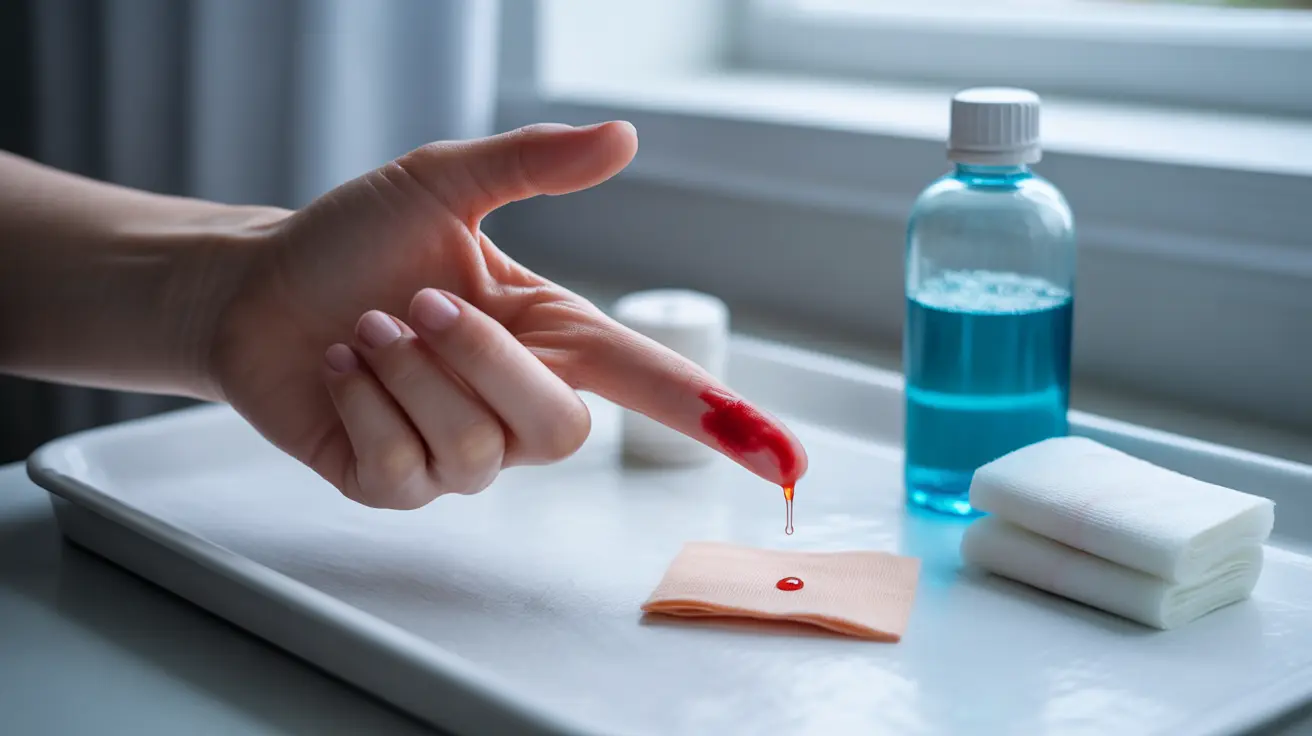When a cut on your finger continues bleeding after two hours, it can be concerning and potentially indicate a need for medical attention. Understanding how to properly manage persistent bleeding and knowing when to seek professional help is crucial for proper wound care and preventing complications.
This comprehensive guide will walk you through the steps to handle a continuously bleeding finger cut, including proper first aid techniques, warning signs to watch for, and prevention of infection.
Initial Assessment and First Aid Steps
Before taking any action, it's important to assess the severity of the cut. If your finger is still bleeding after two hours, follow these immediate steps:
- Clean your hands thoroughly with soap and water
- Examine the wound for debris or foreign objects
- Apply firm, direct pressure with a clean cloth or sterile gauze
- Elevate your hand above heart level
- Replace blood-soaked bandages with fresh ones
Understanding Why Cuts May Continue Bleeding
Several factors can contribute to prolonged bleeding from a finger cut:
- Location of the cut on a highly vascular area
- Depth of the wound
- Blood-thinning medications
- Underlying medical conditions
- Continuous movement of the injured finger
Proper Wound Care Techniques
Cleaning the Wound
Proper cleaning is essential to prevent infection and promote healing:
- Rinse thoroughly with clean running water
- Use mild soap to clean around the wound
- Pat the area dry with a clean towel
- Apply an antiseptic solution if available
Bandaging Methods
The right bandaging technique can help control bleeding and protect the wound:
- Start with a non-stick sterile pad
- Wrap with adequate pressure but not too tight
- Secure the bandage properly
- Change dressings regularly or when soaked
When to Seek Medical Attention
Certain situations require immediate medical care:
- Bleeding that doesn't stop after 30 minutes of direct pressure
- Deep cuts that may need stitches
- Signs of infection (redness, warmth, swelling)
- Numbness or loss of finger movement
- Exposed bone or tendon
Preventing Complications
To ensure proper healing and avoid complications:
- Keep the wound clean and dry
- Change bandages daily or when soiled
- Avoid activities that could reopen the wound
- Monitor for signs of infection
- Follow proper wound care instructions
Frequently Asked Questions
Why is my cut finger still bleeding after 2 hours and what should I do next?
If your finger is still bleeding after 2 hours, apply firm, direct pressure with a clean cloth, elevate your hand above your heart, and ensure the bandage is properly secured. If bleeding continues despite these measures, seek medical attention as you may need stitches or have hit a blood vessel.
How can I stop bleeding from a finger cut quickly at home?
To stop bleeding quickly, apply direct pressure with sterile gauze, elevate your hand above your heart, and maintain constant pressure for at least 15 minutes without checking the wound. Use a clean bandage and avoid moving the injured finger.
When should I see a doctor for a bleeding cut on my finger?
Seek medical attention if the bleeding hasn't slowed after 30 minutes of direct pressure, if the cut is deep or gaping, if you can see bone or tendon, or if you experience numbness or limited movement in your finger.
What is the proper way to clean and care for a bleeding finger wound to prevent infection?
Clean the wound thoroughly with soap and water, apply an antiseptic solution if available, cover with a sterile bandage, and change dressings daily or when soiled. Monitor for signs of infection such as increased redness, warmth, swelling, or pus.
Can applying pressure for too long cause more bleeding or damage to a finger cut?
Applying appropriate pressure will not cause additional damage or bleeding. However, ensure the pressure isn't so tight that it cuts off circulation to your finger. You should still be able to feel your pulse and your fingertip should remain warm and pink.




